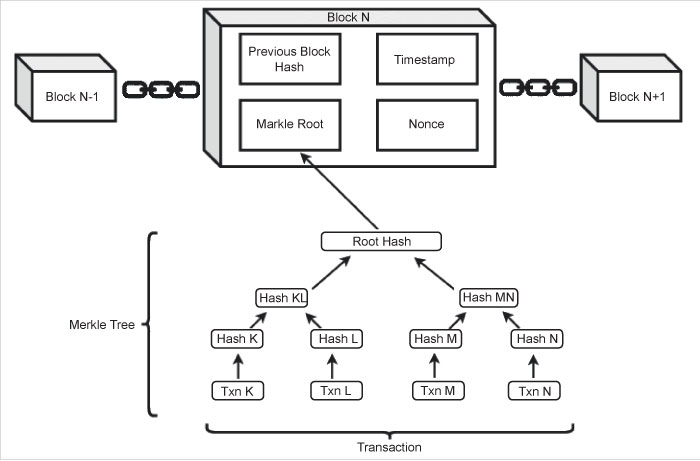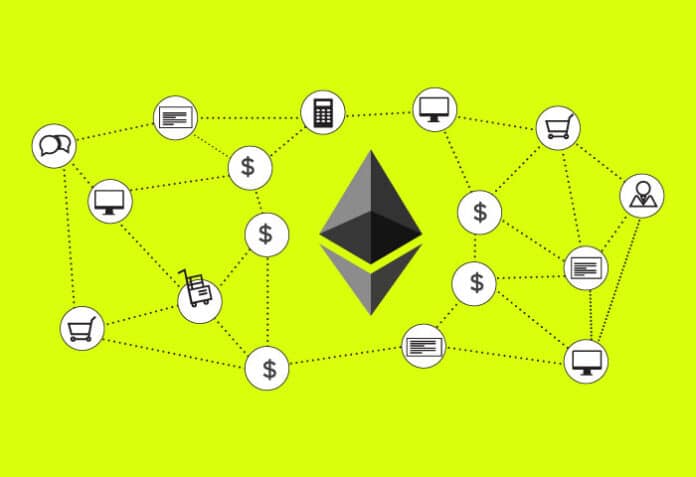Ethereum’s journey embodies the essence of open source development in blockchain. Its impact is undeniable, inspiring global innovation and shaping the ethos of decentralised collaboration. Its legacy illuminates the boundless potential of open source blockchain technology.
In a world of innovation, open source blockchain technology knows no limits. Let’s explore Ethereum’s transformative journey, revealing the core principles that fuel its groundbreaking role. This expedition offers profound insights into Ethereum’s influence on the wider blockchain ecosystem and a glimpse into the uncharted territories of open source blockchain technology.
The significance of open source development in blockchain
Before diving into Ethereum’s remarkable journey, it’s essential to recognise the profound significance of open source development in the blockchain industry. Open source principles are the lifeblood of blockchain innovation. They enable diverse communities of developers, researchers, and enthusiasts to come together, collaborate, and collectively drive the development of blockchain projects. The power of open source lies in its transparency, inclusivity, and the accelerated pace of innovation it fosters. In the context of blockchain, these principles empower the creation of decentralised, trustless networks poised to disrupt a myriad of industries.
Ethereum’s role in advancing open source blockchain technology
Ethereum has played a transformative role in advancing open source blockchain technology. At its core, Ethereum introduced the concept of smart contracts, revolutionising how transactions and agreements are executed. These self-executing contracts automate processes, reducing the need for intermediaries and enhancing trust in digital transactions. Ethereum’s commitment to open source development further reinforces its impact. Its transparent codebase invites global participation, fostering a diverse community of developers and advocates. Ethereum improvement proposals (EIPs) provide a structured framework for collaborative innovation, ensuring that the platform evolves with input from all stakeholders.
Beyond its platform, Ethereum’s influence resonates across the blockchain space. Decentralised finance (DeFi) and non-fungible tokens (NFTs) have thrived on Ethereum, reshaping financial services and ownership. Ethereum’s DeFi and NFT ecosystems have expanded the horizons of blockchain applications, showcasing its far-reaching impact. Additionally, Ethereum’s prominence has accelerated the development of interoperability solutions, bridging different blockchains and promoting seamless asset transfers.
The genesis of Ethereum
Ethereum traces its origins to the visionary mind of Vitalik Buterin in 2013. Recognising the limitations of Bitcoin, Buterin penned the Ethereum whitepaper, envisioning a blockchain that could go beyond mere digital currency. He visualised a versatile and open platform that could support smart contracts and a wide array of decentralised applications.
Buterin’s vision ignited a call to action, rallying a global community of developers, including figures like Gavin Wood and Joseph Lubin, who shared his belief in Ethereum’s potential. In 2015, Ethereum’s genesis block marked the official beginning of a new era in blockchain technology, where developers could build decentralised applications that extended far beyond the boundaries of digital currency. This genesis moment unleashed a wave of innovation and inspired a worldwide movement.
The genesis of Ethereum serves as a testament to the power of visionary thinking, open source collaboration, and the boundless possibilities of blockchain. It not only birthed a blockchain but sparked a global movement, inspiring developers, entrepreneurs, and blockchain enthusiasts to reimagine what decentralised technology could achieve. Ethereum’s journey from a whitepaper to a thriving ecosystem is a testament to the enduring impact of bold ideas and the transformative potential of blockchain technology on a global scale.

Ethereum’s open source philosophy
Ethereum’s foundation is built upon a bedrock of open source philosophies. From its inception, Ethereum championed transparency, collaboration, and community involvement as fundamental tenets. The source code of Ethereum’s client software, such as Geth and Parity, is accessible to the public, inviting scrutiny and contributions from developers worldwide. This unwavering commitment to transparency ensures the Ethereum network remains secure and free from hidden vulnerabilities.
However, Ethereum’s dedication to open source transcends mere code accessibility. It fosters a global community of developers and advocates who work harmoniously to continually enhance the platform. This community values inclusivity, welcoming developers of all backgrounds to contribute their expertise to the network’s growth. It is this spirit of collaboration that defines Ethereum’s open source philosophy.
Ethereum’s contribution to the blockchain space is perhaps most profound in the realms of smart contracts and decentralised applications (DApps). These innovations have not only redefined how we interact with blockchain but have also democratised access to decentralised technology.
Smart contracts
Ethereum introduced the groundbreaking concept of smart contracts. These self-executing contracts are coded agreements with the terms and conditions directly written into the blockchain. Unlike traditional contracts, smart contracts automatically execute actions when predefined conditions are met, without the need for intermediaries. Ethereum’s innovation was to make smart contracts a fundamental part of its blockchain, thus enabling decentralised, trustless agreements.
// Example of a simple Ethereum smart contract
// This contract allows two parties to enter into a bet, and the winner receives the funds
pragma solidity ^0.8.0;
contract SimpleBet {
address public player1;
address public player2;
bool public isGameFinished;
constructor() {
player1 = msg.sender;
isGameFinished = false;
}
function enterGame() public payable {
require(msg.sender != player1 && !isGameFinished, “Invalid entry”);
player2 = msg.sender;
}
function finishGame(address winner) public {
require(msg.sender == player1 || msg.sender == player2, “Not a participant”);
require(!isGameFinished, “Game already finished”);
payable(winner).transfer(address(this).balance);
isGameFinished = true;
}
}
Development of DApps
Ethereum’s open source framework provided the fertile ground necessary for the development of DApps. These applications run on the Ethereum blockchain, utilising smart contracts for various purposes, including financial services, gaming, supply chain management, and more. Ethereum’s open source nature, along with the accessibility of its code and development tools, lowered the entry barriers for developers worldwide.
Developers could leverage Ethereum’s open source codebase to create DApps that could interact with smart contracts seamlessly. Ethereum’s decentralised and transparent infrastructure allowed for innovative solutions to be built on top of it, disrupting traditional industries and paving the way for a new wave of decentralised services.
// Example of a simple decentralized application (DApp) interacting with an Ethereum smart contract using Web3.js
const Web3 = require(‘web3’);
const web3 = new Web3(‘https://mainnet.infura.io/v3/YOUR_INFURA_PROJECT_ID’);
const contractAddress = ‘0xYourSmartContractAddress’;
const contractABI = [...]; // ABI of your smart contract
const contract = new web3.eth.Contract(contractABI, contractAddress);
async function placeBet() {
// Interact with the smart contract to place a bet
await contract.methods.enterGame().send({ from: ‘0xYourAccountAddress’, value: web3.utils.toWei(‘1’, ‘ether’) });
}
async function declareWinner() {
// Interact with the smart contract to declare a winner
await contract.methods.finishGame(‘0xWinningPlayerAddress’).send({ from: ‘0xYourAccountAddress’ });
}
Ethereum as a platform for innovation
Ethereum has served as a fertile breeding ground for a multitude of innovative projects and solutions within the blockchain ecosystem. Noteworthy endeavours like MakerDAO, Uniswap, and CryptoKitties have thrived on the Ethereum platform. These projects have redefined financial services, decentralised exchanges, and digital collectibles, demonstrating the versatility and potential of blockchain technology.
Ethereum’s open source nature has encouraged developers to push the boundaries of what is possible. The platform’s extensible architecture and active development community have created an environment where experimentation and innovation flourish, driving the blockchain industry forward.
Open source development on Ethereum
A defining characteristic of Ethereum is its decentralised development community. The Ethereum ecosystem does not discriminate; it embraces the contributions of anyone with the passion and skills to participate in its growth. This inclusivity is a testament to Ethereum’s unwavering commitment to open source principles, where the best ideas rise to the top, regardless of their origin.
Ethereum improvement proposals (EIPs) provide a structured framework for proposing and discussing changes to the Ethereum network. This open dialogue ensures that all stakeholders have a voice in shaping the platform’s future, fostering a sense of ownership and collective responsibility among the Ethereum community.
Challenges and solutions
Ethereum’s open source journey has been marked by innovation and adaptability in the face of significant challenges. Here, we address some key challenges Ethereum has encountered and the inventive solutions it has embraced.
Scalability challenge: Ethereum faced scalability issues due to increased usage, leading to slow transaction confirmations and high gas fees.
Solution: Ethereum 2.0 (Eth2) is a comprehensive solution, transitioning from proof of work (PoW) to proof of stake (PoS) to increase scalability. Shard chains enable parallel processing, alleviating scalability concerns.
High gas fees challenge: Surging demand resulted in high gas fees, hindering user and developer interactions.
Solution: Layer 2 scaling solutions, like Optimistic Rollups and zk-Rollups, offer cost-effective off-chain processing while maintaining mainnet security.
Network congestion challenge: Network congestion led to slow transactions, impacting user experience.
Solution: Eth2 and shard chains distribute transactions, reducing mainnet congestion for smoother performance.
Security and scalability balance challenge: Balancing security and scalability was complex, with some solutions posing security risks.
Solution: Eth2 seeks to balance security and scalability by transitioning to PoS, enhancing security, and introducing shard chains for scalability.
Compatibility and transition challenge: Transitioning to PoS while maintaining compatibility was challenging.
Solution: Tools and bridges are being developed to facilitate a smooth transition from PoW to PoS, ensuring application and asset migration.
Developer experience challenge: Complex development and high gas costs affected developer productivity.
Solution: Initiatives like the Ethereum Developer DAO, Layer 2 solutions, and sidechains enhance the developer experience.
Adoption and education challenge: Widespread adoption and education on blockchain technology remained a challenge.
Solution: Educational initiatives, hackathons, and developer support foster understanding and adoption of blockchain technology.
Ethereum 2.0: A leap forward
Ethereum 2.0 marks a monumental leap forward in Ethereum’s mission to advance open source blockchain technology. This comprehensive upgrade is designed to tackle some of the most pressing issues that Ethereum has faced. By transitioning to PoS and implementing shard chains, Ethereum 2.0 promises to deliver heightened scalability, reduced energy consumption, and enhanced network security. It represents Ethereum’s commitment to continuous improvement and innovation.
Ethereum’s impact on the wider blockchain ecosystem
Ethereum’s open source model has acted as a catalyst for innovation within the broader blockchain ecosystem. Its influence can be observed in several key ways.
- Transparency and trust: Ethereum’s commitment to open source development has established a foundation of transparency and trust. This ethos has encouraged other blockchain projects to adopt similar principles, enhancing their credibility within the community.
- Collaborative ethos: Ethereum’s vibrant and collaborative community has inspired developers and teams from other blockchain projects to embrace open collaboration. The spirit of working together, sharing knowledge, and building on each other’s successes has become a hallmark of Ethereum’s influence.
- Cross-pollination of ideas: Ethereum’s groundbreaking concepts, such as smart contracts and decentralised applications (DApps), have sparked a wave of innovation throughout the blockchain space. Many projects have drawn inspiration from Ethereum’s success and incorporated similar functionalities into their own platforms.
- DeFi and NFT proliferation: Ethereum’s DeFi and NFT ecosystems have had a profound impact on the blockchain industry. Other projects have followed suit, creating decentralised financial solutions and digital assets marketplaces, and expanding the possibilities for blockchain applications.
- Interoperability initiatives: Ethereum’s prominence has accelerated the development of interoperability solutions. Projects like Polkadot, Cosmos, and Aion aim to bridge the gap between different blockchains, enabling seamless asset transfers and collaboration between ecosystems.
- Decentralised governance: Ethereum’s experiments with decentralised governance, as seen through proposals and decisions made by the Ethereum community, have inspired other projects to explore similar governance models. This has led to the democratisation of decision-making within blockchain communities.
- Global innovation hub: Ethereum has become a global epicentre for blockchain innovation. Its open source framework invites developers from diverse backgrounds to participate, resulting in a rich tapestry of blockchain applications, protocols, and experiments.
The future of Ethereum and open source blockchain
The future of Ethereum and open source blockchain technology holds immense promise and potential. As Ethereum 2.0 continues to roll out and mature, it is poised to become an even more scalable and sustainable blockchain platform.
- Ethereum 2.0 evolution: Ethereum 2.0, with its transition to proof-of-stake (PoS) consensus, shard chains, and improved scalability, promises a more efficient and eco-friendly blockchain. This evolution will enable Ethereum to process a higher number of transactions per second, reducing congestion and lowering energy consumption.
// A simple Solidity smart contract example
// This contract allows users to store and retrieve data on the Ethereum blockchain
pragma solidity ^0.8.0;
contract StorageContract {
string private data;
function storeData(string memory _data) public {
data = _data;
}
function retrieveData() public view returns (string memory) {
return data;
}
}
- Decentralised finance (DeFi) growth: DeFi, built predominantly on Ethereum, is likely to continue its explosive growth. Ethereum’s role as the backbone of DeFi applications will drive financial innovation, potentially reshaping traditional finance systems.
// A simple JavaScript example of interacting with a DeFi smart contract on Ethereum using Web3.js
const Web3 = require(‘web3’);
const web3 = new Web3(‘https://mainnet.infura.io/v3/YOUR_INFURA_PROJECT_ID’);
const contractAddress = ‘0xYourContractAddress’;
const contractABI = [...]; // ABI of your DeFi smart contract
const contract = new web3.eth.Contract(contractABI, contractAddress);
async function checkBalance(accountAddress) {
const balance = await contract.methods.balanceOf(accountAddress).call();
console.log(`Account balance: ${balance} tokens`);
}
checkBalance(‘0xYourAccountAddress’);
- Non-fungible tokens (NFTs) expansion: NFTs, which have gained mainstream attention, will continue to flourish on Ethereum. The platform’s infrastructure will support the creation and trading of unique digital assets across various industries, from art and gaming to real estate.
// A simple Solidity smart contract example for creating an NFT on Ethereum
pragma solidity ^0.8.0;
import “@openzeppelin/contracts/token/ERC721/extensions/ERC721Enumerable.sol”;
import “@openzeppelin/contracts/access/Ownable.sol”;
contract MyNFT is ERC721Enumerable, Ownable {
using SafeMath for uint256;
using Address for address;
constructor() ERC721(“MyNFT”, “NFT”) {}
function mint(address to, uint256 tokenId) public onlyOwner {
_mint(to, tokenId);
}
}
In conclusion, Ethereum’s remarkable journey from its inception to its current status as a groundbreaking open source blockchain platform exemplifies the pivotal role of open source development in the blockchain industry. Its unyielding commitment to transparency, collaboration, and innovation has not only transformed the blockchain landscape but has also inspired countless developers and projects worldwide. Ethereum is a shining beacon of open source collaboration in the blockchain space, shaping the future of decentralised innovation and offering a glimpse into the boundless possibilities of open source blockchain technology.




